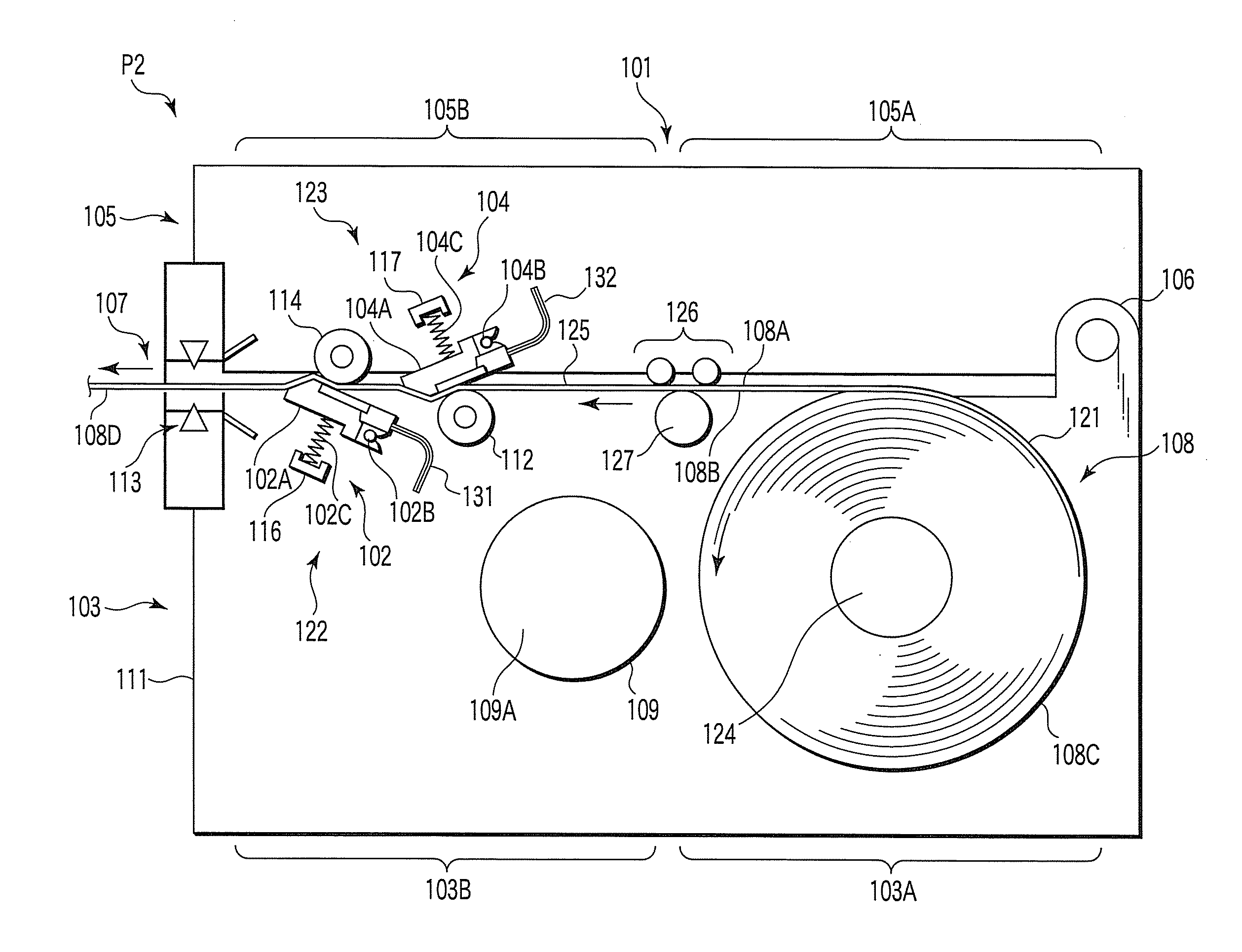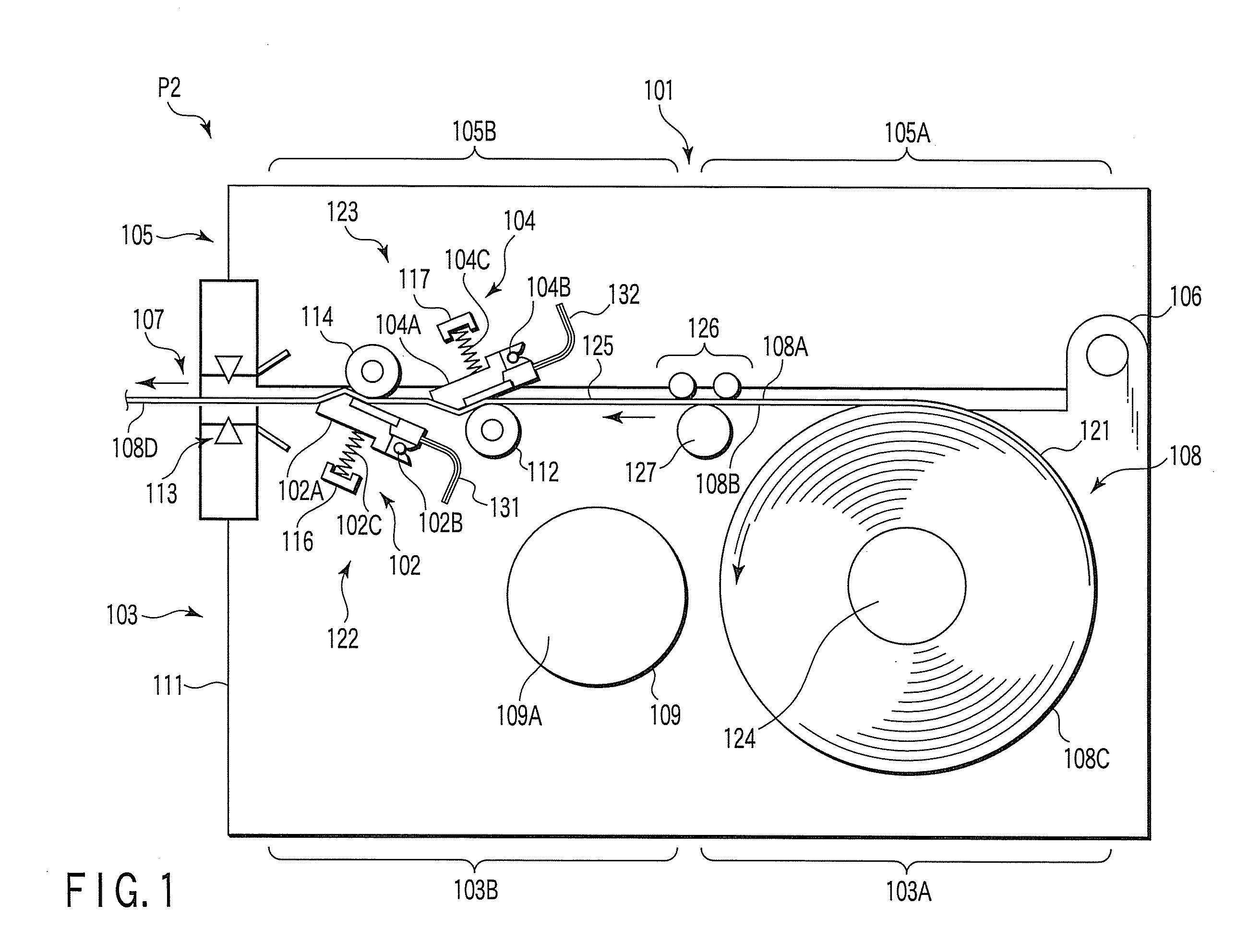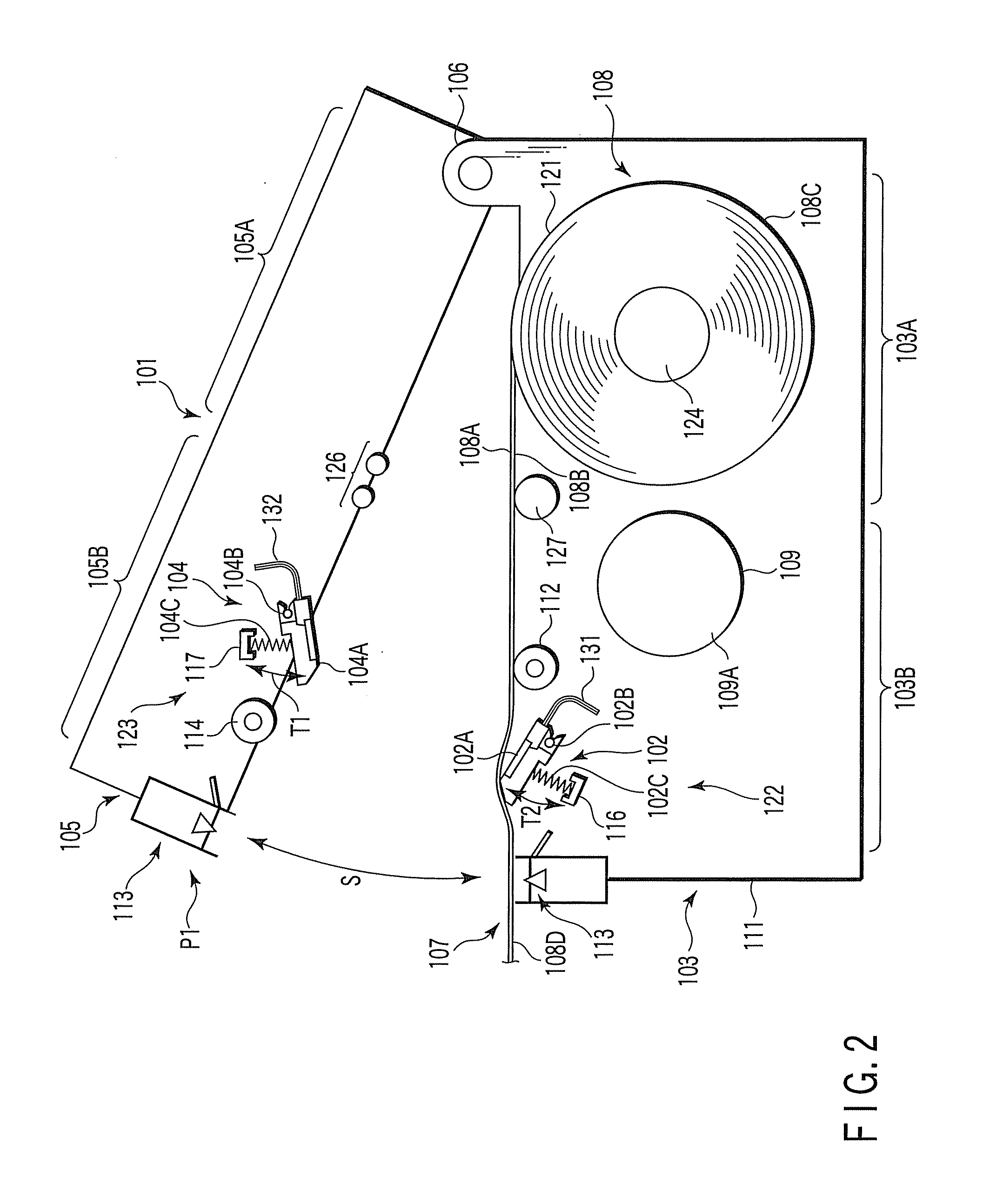Printer
a printing machine and printing technology, applied in the field of printing machines, can solve the problems of damage to the components, the inability of the second printing unit to print data in the region of the paper, and the inability of the conventional double-side thermal printer to utilize the timing marks, so as to prevent interfering
- Summary
- Abstract
- Description
- Claims
- Application Information
AI Technical Summary
Benefits of technology
Problems solved by technology
Method used
Image
Examples
first embodiment
[0040]A printer will be described, with reference to FIGS. 1 and 2. As FIG. 1 shows, the thermal printer 101, which is one type of a printer, comprises a main unit 103, a cover 105, a hinge mechanism 106, and a paper-ejecting unit 107. The main unit 103 has a second thermal head 102 that is a print head. The cover 105 has a first thermal head 104, i.e., print head, and covers the main unit 103. The hinge mechanism 106 is positioned between the main unit 103 and the cover 105. The paper-ejecting unit 107 is opposed to the hinge mechanism 106 and located between the main unit 103 and the cover 105. The hinge mechanism 106 supports the cover 105, allowing the same to rotate. That is, the cover 105 can be rotated between a first state P1 and a second state P2, in which it is opened and closed, respectively, with respect to the main unit 103.
[0041]The thermal printer 101 further comprises a second printing unit 122, and a first printing unit 123 arranged between the second printing unit...
third embodiment
[0084]A thermal printer according to this invention will be described, with reference to FIGS. 8 to 10.
[0085]FIG. 8 schematically shows the internal structure of a thermal printer 201 according to the third embodiment. This thermal printer 201 can simultaneously print data on both sides of a double-sided thermal paper 302. The printer 201 can be used in, for example, cash registers for use in retail shops.
[0086]As shown in FIG. 9, the double-sided thermal paper 202 (hereinafter called “thermal paper”) has a base paper 203 and two thermosensible layers 204 and 205. The layers 204 and 205 are formed on the obverse and reverse sides of the base paper 203, respectively. More precisely, the first thermosensible layer 204 is formed on one side (e.g., obverse side) of the base paper 203, and the second thermosensible layer 205 is formed on other side (e.g., reverse side) of the base paper 203. These layers 204 and 205 are made of material that attains a desired color, such as black or red,...
fourth embodiment
[0121]A printer will be described in detail.
[0122]FIG. 11 shows a printer that is the fourth embodiment. In FIG. 11, reference number 301 designates the main unit of the printer. The main unit 301 incorporates a reel unit 303 from which a paper 302 is supplied. One side of the paper 302 is a thermosensible side 302a. The other side of the paper 302 is a thermosensible side 302b. The paper 302 is fed along the paper-feeding path 304. First and second printing units 306 and 307 are arranged in the paper-feeding path 304. The first printing unit 306 is arranged downstream with respect to the second printing unit 307, in the direction of feeding the paper.
[0123]The first printing unit 306 has a first thermal head 310, which is used as first print head. P1 indicates the position (printing start position) at which the heat-generating element of the head 310 is provided. Above the first thermal head 310, a platen roller 311 is arranged and used as first platen. The platen roller 311 can b...
PUM
 Login to View More
Login to View More Abstract
Description
Claims
Application Information
 Login to View More
Login to View More - R&D
- Intellectual Property
- Life Sciences
- Materials
- Tech Scout
- Unparalleled Data Quality
- Higher Quality Content
- 60% Fewer Hallucinations
Browse by: Latest US Patents, China's latest patents, Technical Efficacy Thesaurus, Application Domain, Technology Topic, Popular Technical Reports.
© 2025 PatSnap. All rights reserved.Legal|Privacy policy|Modern Slavery Act Transparency Statement|Sitemap|About US| Contact US: help@patsnap.com



